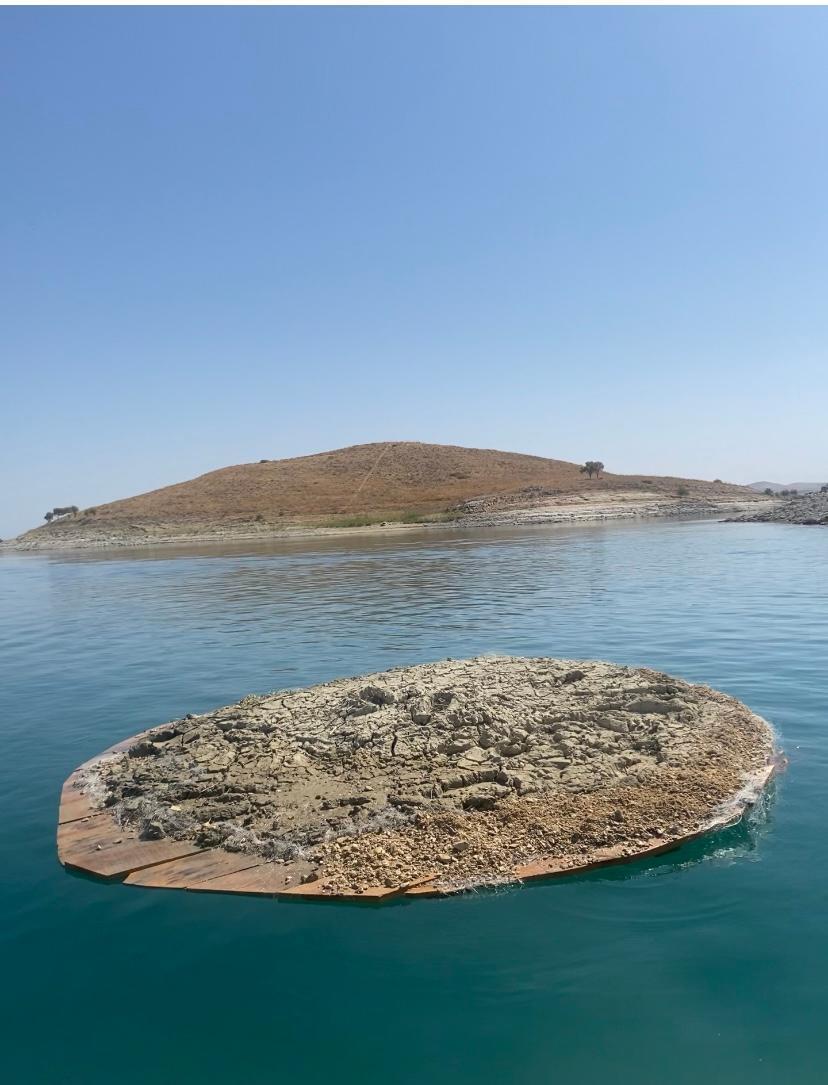Land and River Art Biennial opens in Adıyaman
Hatice Utkan Özden

Commagene Lar, Land and Art Biennial opened in Adıyaman’s Kahta district on Sept. 23. Curated by Nihat Özdal, the biennial showcases artworks of 13 artists, Shirin Abedinarad, Vahap Avşar, Murat Cem Baytok, Anna Laura Cantera, Yalda Jamali, Odmaa Uranchimeg, Cengiz Tekin, Mariko Hori, Zaid Saad, Meltem Şahin, Mert Kocadayı and Kim İncheol.
The curator Nihat Özdal said, this will be Türkiye’s first Land and River Art Biennial around the Euphrates River. Özdal also said, that this geography is an exclusive one giving all the artistic needs that one can reach. “That’s why we must take care of this geography, especially after the earthquake. That’s why we must continue doing art events in this geography,” he added.
The biennial is centered around three islands situated across from the historical Nevali Çori's flooded areas. These islands are free from settlements and agricultural activity and are currently used exclusively for art-related activities. Other notable places in the region include the Karakuş Tumulus, Cendere Bridge and Nemrut Peak, significant in the region's archaeology and history. The biennial theme "The Value of a Metaphor" is based on a text written by Ismail Ertürk, a professor from the University of Manchester.
The biennial team also held a panel before the opening. The Sustainability, Economy, and Environment Panel focused on land art, and how art can change society’s perception of economy and sustainability. Moderated by İsmail Ertürk, the panel featured talks by Betül Bildik, Fatma Çolakoğlu, Burak Delier, Sabahnur Erdemli, Bahadır Kaleağası, and Argun Okumuşoğlu as speakers. Irini Papadimitrio gave a speech titled “Money and Environment,” Sophy King spoke on “Anthropocene Age and Our Relationship with Nature,” and Becky Lyon discussed the “Relations between Art and Ecology.”
The artworks at the biennial focus on different topics. Zaid Saad’s work is about refugees and the hardships they face in the world while Shirin Abedinarad’s land art installation consists of two primary elements: A trio of doors from the aftermath of the February 2023 earthquake and three mirror panels. These components combine to create an immersive experience that challenges and transforms the viewer’s perspective. Abedinarad used doors that survived from the Adıyaman earthquake.
On the other hand, Vahap Avşar’s work “Shelter,” aims to create a shaded area where people and animals can take a break by producing the bird’s eye silhouette of an F-16 aircraft from an iron profile and installing it on a hill that can be seen from Nemrut with iron legs to form a 3-meter high roof. This area will be used by Biennial visitors to rest, as well as by other living creatures after the biennial. This project emerged due to Avşar’s experiences and memories during the five days he spent in this geography in August 1986, when he got lost while searching for Mount Nemrut.
River installation of Mariko Hori takes the form of a small island floating on the reservoir formed by the Atatürk Dam on the Euphrates River. On its surface, there is a layer of natural clay symbolizing the inherent connection between land and water. As the clay dries out on the water’s surface during the biennial, it serves as a symbolic reflection of the changing nature of the world influenced by human activities, where these abundant water bodies can be related to scarcity elsewhere.
Cengiz Tekin’s installation that takes place at Cendere Bridge, titled “The Road” deals with the complexity of man-made asphalt roads, one of the hallmarks of the modern world. While these roads enable people to travel quickly and easily, they also interrupt the traditional paths followed by nature. At this intersection point, man’s relationship with nature is questioned. While asphalt roads represent civilization and progress, the roads followed by water in nature symbolize natural balance and continuity. Tekin carries the typical patterns of bureaucracy, causing people to ignore the beauty of nature with standards, procedures, and rules stuck in human lives. The pattern of the road (the carpet that Tekin created as the road) becomes the symbol of the chaotic world.
The exhibition will continue until Dec. 23.
















